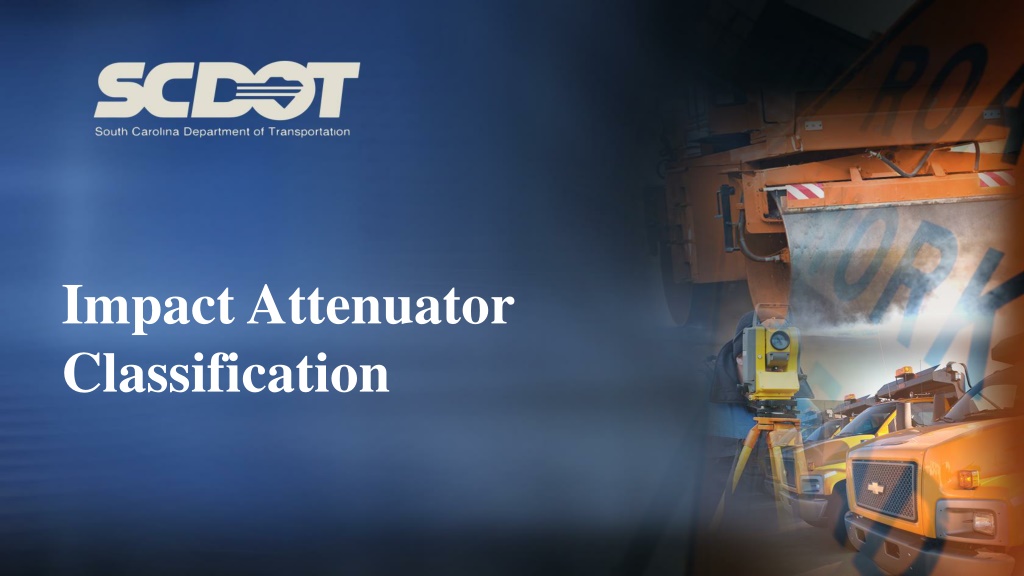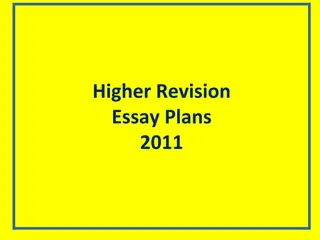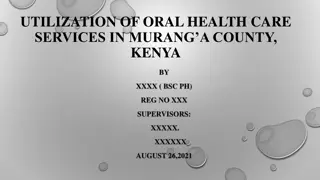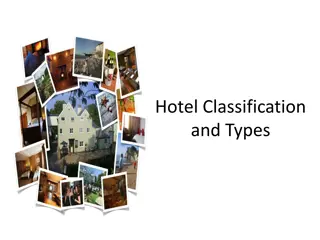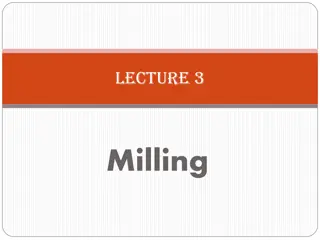Understanding Impact Attenuator Classification and Factors Influencing Existing Systems
Exploring impact attenuator classification and influencing factors on existing systems, this content delves into SCDOT's Engineering Directive #42 and presentations from AMOTIA Conference. Detailed information on various crash test repair costs and comparisons of different impact attenuator systems are also provided.
Download Presentation

Please find below an Image/Link to download the presentation.
The content on the website is provided AS IS for your information and personal use only. It may not be sold, licensed, or shared on other websites without obtaining consent from the author. Download presentation by click this link. If you encounter any issues during the download, it is possible that the publisher has removed the file from their server.
E N D
Presentation Transcript
Impact Attenuator Classification
Influencing Factors SCDOT Engineering Directive #42 Existing Attenuator Systems AMOTIA Conference
Existing Impact Attenuators GREAT (GUARD RAIL ENERGY ABSORBING TERMINAL)
Existing Impact Attenuators QUADGUARD II
AMOTIA Conference NCHRP 350 Crash Test Manufacturer Reported Repair Costs NCHRP 350 Test Frontal Impacts Side Impacts Frontal Avg. CRASH CUSHION #3-30 $5,451 $4,816 NA NA $2,886 $13,702 $14,132 #3-31 $6,326 $5,665 $6,120 $6,800 $5,072 $13,702 $14,132 #3-32 $6,326 $5,665 $6,120 $6,800 $5,199 $13,702 $14,132 #3-33 $8,532 $7,182 $13,176 NA $7,010 $13,702 $14,132 #3-37 $1,995 $1,883 $4,110 NA $0 $13,702 $14,132 #3-38 $1,995 $2,005 $4,379 $2,283 $633 $13,702 $14,132 #3-39 $2,619 $2,853 $11,569 $697 $3,977 $13,702 $14,132 AVG. Side Avg. QuadGuard QuadGaurd II QuadGuard HS QuardGuard M10 TAU II Quest TRACC $4,749 $4,295 $7,579 See BelowSee BelowSee Below $3,540 $5,042 $13,702 $13,702 $14,132 $14,132 $6,659 $5,832 $8,472 $2,203 $2,247 $6,686 $1,537 $13,702 $14,132 Premium Systems QuadGuard Elite 8 Bay REACT 350 REACT 350 II SCI Smart Cushion TAU II-R $4,729 $0 $0 $4 NA $3,612 $0 NA $4 $0 $1,806 $3,216 $0 $4 $0 $1,806 $0 NA $4 NA $1,846 NA $0 $0 $0 $1,967 $2,602 NA NA $733 $2,870 NA NA $0 $3,426 $2,662 $1,163 $0 $3 $832 $2,988 $804 $0 $4 $0 $2,228 $2,602 $0 $0 $1,386
AMOTIA Conference Estimated Crash Test Repair Costs NCHRP 350 Test Frontal Impacts Side Impacts Frontal Avg. CRASH CUSHION #3-30 $5,451 $4,816 NA $6,800 $5,504 $13,702 $14,132 #3-31 $6,326 $5,665 $6,120 $8,419 $5,072 $13,702 $14,132 #3-32 $6,326 $5,665 $9,336 $8,419 $7,559 $13,702 $14,132 #3-33 $8,532 $7,850 $14,082 $10,961 $7,010 $13,702 $14,132 #3-37 $4,501 $4,550 $4,110 $4,857 $0 $13,702 $14,132 #3-38 $4,622 $4,550 $4,379 $4,857 $3,199 $13,702 $14,132 #3-39 $5,245 $4,550 $11,569 $3,238 See BelowSee BelowSee Below $3,977 $4,617 $13,702 $13,702 $14,132 $14,132 AVG. Side Avg. QuadGuard QuadGuard II QuadGuard HS QuadGuard M10 TAU II Quest TRACC $5,857 $5,378 $8,266 $6,659 $5,999 $9,846 $4,789 $4,550 $6,686 $6,286 $13,702 $14,132 $2,392 $13,702 $14,132 Premium Systems QuadGuard Elite 8 Bay REACT 350 REACT 350 II SCI Smart Cushion TAU II-R $8,024 $0 $5,907 $4 NA $11,142 $7,211 NA $4 $3,143 $8,024 $1,923 $11,815 $4 $5,370 $11,550 $9,134 NA $4 NA $4,858 NA $3,072 $0 $0 $4,858 $4,425 NA NA $733 $3,052 NA NA $0 $3,426 $7,358 $4,539 $6,931 $3 $2,534 $9,685 $4,567 $8,861 $4 $4,256 $4,256 $4,425 $3,072 $0 $1,386
Replacement Contract 50 Most Frequently Hit Units The approved attenuators shall be resettable and reusable and designed for the characteristics of each specific location. The attenuators approved for selection and installation shall be one of the following: Approved Units: Smart Cushion Innovations (SCI) QuadGuard Elite Tau-II-R
Quadguard Elite Concerns Time requirement for repair (ED #42) Worker safety (stored energy)
Collapsed QuadGuard Elite Restoring Collapsed System 1) System Restoration Before starting this procedure, please read and understand the foregoing Warning statement. The following instructions outline a set of steps for positioning a large vehicle up against a compressed system to prevent unexpected system spring-back while maintenance workers are attempting to repair the system. A) Position a truck of not less than 6000 kg [13,000 lbs.] centered on the system just in front of the Nose Assembly. The truck should be presenting its strongest bumper to the system. The selected bumper s height should be such that the center of the bumper rests on the middle of the system s Nose Assembly (approximately, 610 mm [24 ] in height).
Collapsed QuadGuard Elite B) Drive the truck so that the bumper displaces the systems Nose Cylinder approximately 150 mm [6 ]. In the absence of the Nose Assembly, place a protective material between the bumper and the leading Diaphragm leaving approximately 25 mm [1 ] gap between the protective material and the vehicle s bumper. The driver should remain in the vehicle depressing the brake pedal after the vehicle has been placed in position. Warning: Once the leading bumper is over the system s Monorail, the vehicle may be subject to impact by the system due to an unexpected restoration. The driver should be wearing a seat belt and have the vehicle in the lowest possible gear when approaching the system. In the event that the system unexpectedly deploys before Step B is completed, the driver should apply the brakes immediately, bringing the vehicle to a controlled stop. The driver should then put the vehicle in neutral while still applying the brakes. Gradually release the brakes, allowing the system to push the vehicle back in a safe and controlled manner.
Collapsed QuadGuard Elite C) It should now be safe for a maintenance worker to inspect the system to determine where mechanical binding is present. Remove all debris from the system prior to checking for binding. The binding will probably be located at the monorail guides on the forward-most Diaphragm(s) or Fender Panels. Cautiously using a pry bar or jostling the system with a vehicle may aid in releasing the mechanism of binding. Once released, the driver should allow the system to extend in a safe and controlled manner.
Quadguard Elite Concerns Time requirement for repair (ED #42) Worker safety (stored energy) Need for repair (re-boundable) Hit frequency (when to replace?)
Quadguard Elite Product Manual Life Expectancy Environment Except due to damage, it is anticipated that he cylinders may survive in a highway environment for a period ranging for five to fifteen years from the date of deployment. Impact Life expectancy is also affected by: 1. The number of impacts 2. The severity of the impacts 3. The temperature at the time of the impacts
PROBLEMS 1. Difficulty in meeting repair requirement Two Types of Impact Attenuators Partially Reusable Units Self-Restoring Units with Life Cycle Concerns 2. Costly repairs 1. 2.
SCDOTs Solution 1. Classification of Impact Attenuators Class A Low Maintenance Class B Self Restoring Class C Partially Reusable Class D - Sacrificial 2. Define appropriate application for classes
Category Classes for Crash Cushions Class A - Low Maintenance Category Class A systems require the fewest number of repair parts and have the quickest reset time of all the other category classes. Products within this category class may be used in any location where category class A, B, C, or D has been specified. These systems are preferred on the high volume, high speed areas to minimize worker exposure and lane closure time.
Category Classes for Crash Cushions Class B - Self Restoring Category Class B systems are designed to rebound after a design hit to a position that allows the product to sustain a 2nd hit before resetting. These systems generally require significantly fewer repair parts than category C and D systems, but may be periodically subjected to replacement costs of parts vulnerable to weather or repeated hits. These systems are preferred on high volume locations where hit potential is high.
Category Classes for Crash Cushions Class C - Partially Reusable Category Class C systems are designed with sacrificial energy absorbing components within a mostly reusable frame/rail. These systems will generally require replacement of the energy absorbing parts as well as repair and adjustment of the frame/rail system. These systems are preferred on moderate to high volume locations where hit potential is moderate or where the site does not accommodate the length required for transitions and sacrificial guardrail end treatments.
Category Classes for Crash Cushions Class D - Sacrificial Category Class D systems are limited to flexible & semi- rigid end treatments, and impact attenuators, and are designed for one hit before the system requires replacement. If the system requires a constructed foundation, the foundation should not be damaged by a design hit.
Class A - Low Maintenance Low Maintenance is suggested when the site has any of the following conditions: ADT > 70,000 Adjacent Lane Volume (Lane ADT) > 10,000 Gore area with multiple lanes both sides of gore Sites with more than 2 impacts per year are likely (if known)
Class B - Self Restoring Self Restoring is suggested when the site has any of the following conditions: ADT > 20,000 Adjacent Lane Volume (Lane ADT) > 5,000 Sites with more than 1 impact per 2 years are likely (if known)
Class C - Partially Reusable Partially Reusable is suggested when the site has any of the following conditions: ADT < 20,000 Sites with less than 1 impact per 2 years is expected (if known)
Remaining Issue Compliance Unfortunately, I m not sure that the locations with hits are always being evaluated to identify the proper class attenuator. Plan Create a decision matrix form and require it for repair work orders.
Questions/Comments? David B. Cook, P.E. Director of Maintenance CookDB@scdot.org (803) 737-1290
